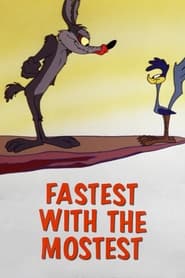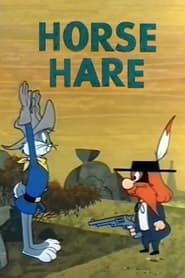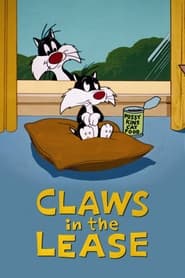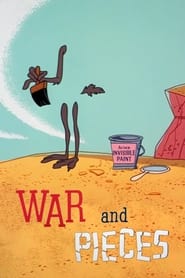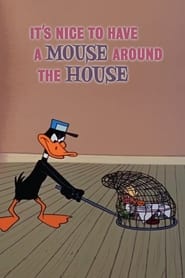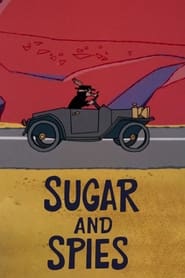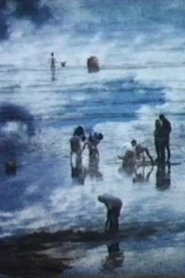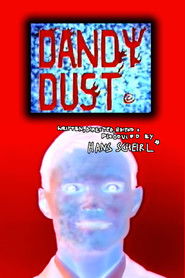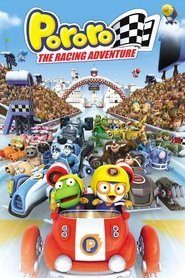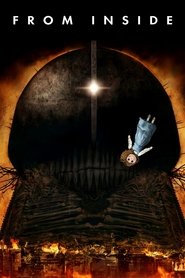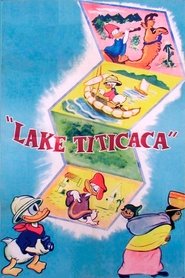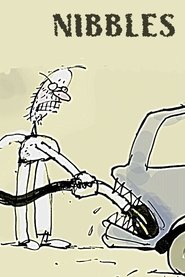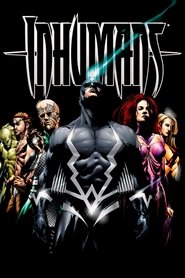Top Rated Animation Movies - Page 336
-
Fastest with the Mostest
1960
star 6.7Wile E. Coyote tries to drop a rocket bomb on the Road Runner from a balloon but inflates himself instead. -
Horse Hare
1960
-
Claws in the Lease
1963
Claws in the Lease
1963
star 5.6Sylvester Cat and his son, Junior, live in a dump, and Junior decides to find them a home. He does, but the fat lady who lives there only wants to adopt Junior and separates the kitten from his father. So, Sylvester makes a number of attempts to gain access to her house. -
War and Pieces
1964
War and Pieces
1964
star 6.4After another failed series of attempts to catch the ever-elusive Road Runner with a grenade, a bow, a rope, invisible paint, and a gun disguised as a peep show, Wile E. Coyote uses a rocket to chase after the bird. The rocket goes off course, crashes through the earth and sends Wile E. to China where a Chinese Road Runner greets him. -
It's Nice to Have a Mouse Around the House
1965
star 5.4When Speedy Gonzales invades the home of Granny and rapidly drives her cat, Sylvester, to a nervous breakdown, Granny calls on Daffy Duck of the Jet Age Pest Control company to do the job of removing Gonzales from her home. -
Sugar and Spies
1966
Sugar and Spies
1966
star 6.8Wile E. Coyote finds a spy kit and uses its contents (sleeping gas, a mail bomb, explosive putty, and a gadget-filled spy car) in his unsuccessful attempt to catch the Road Runner. -
The Beach
1992
-
Jefferson Circus Songs
1974
star 5.4In a fantasy world, life-size cardboard animations interact with children clad in clown wigs, monkey masks, and princess costumes. Together, they host a carnival of surreal goings-on. -
Dandy Dust
1998
Dandy Dust
1998
star 4.8Dust, a split-personality cyborg of fluid gender, zooms through time and space in search of his/her own memories and a sense of understanding. S/he travels from the Planet of White Dust where war is constant, to the Planet of Blood and Swelling, a hybrid of his/her father’s body. -
Pororo: The Racing Adventure
2013
star 5.4Curious little penguin Pororo and his friends accidentally cause an airplane to make an emergency landing in their home of Pororo Village. On the airplane are some turtles being shipped to Northpia to deliver ice sleds, or racing ice cars. Nevertheless, Pororo and his friends believe that the turtles are racers, and the turtles end up giving the gang at Pororo Village some lessons and passing on the championship spirit. In the end, Pororo and his friends follow the turtles to Northpia to participate in the race. Upon arriving at icily beautiful Northpia's race, Pororo and his friends wind up unlikely front-runners, ahead of the polar bears, and make it to the finals. However, a more complicated course awaits Pororo and his friends- as does their strongest adversary yet. -
Intolerance III: The Final Solution
2007
star 7.3Two thousand years into the future, the battlefleet from Earth is still searching for the Planet Zog. Those on board are irreconcilably divided between those that believe the Planet Zog exists, and those that don't. Caught between these warring factions Ade and Eva Hokum are determined to find happiness with each other. Will the Planet Zog be a paradise for them? -
From Inside
2008
From Inside
2008
star 5.1Cee, a young pregnant woman, finds herself on a damaged train slowly transcribing its way across a bleak, apocalyptic landscape. Flood, war, starvation, and a plague of death threaten the train's passengers. Cee struggles through these dangers while coping with the memory of her lost husband and the imminent birth of her child. -
The Young Girl and the Clouds
2001
star 5.7The story of Cinderella is modernised. Cinderella dreams of clouds and ends up fleeing by plane with her Prince Charming. The image is animated simultaneously at various speeds (decor, moving elements, characters) in connection with the sound tape played by Georges Schwizgebel on the piano. It is an intelligent variation on a well-known story with which the viewer can identify -
Lake Titicaca
1942
Lake Titicaca
1942
star 6.5Donald is visiting South America, where he is first overcome by altitude sickness. He spends some time in the picturesque market. Then he takes a llama up into the mountains, with exciting results. -
Did You Ever Take a Ride Over Kansas City Street 'In a Fliver'
1921
star 3.5This film is not really animated, it just consists of Walt drawing a single frame. Part of the Newman Laugh-O-Grams Series. -
Nibbles
2003
-
The Calligrapher
1991
The Calligrapher
1991
star 6.4With harpsichord music in the background, a dandy, seated at a table, plucks a quill pen from a ceiling full of them above him, dips it in ink, thinks, then draws a straight line down the page in front of him, out of which sprout six more quill pens, each held by a hand. The calligrapher moves all the hands and pens in unison, drawing an elaborate feathered wing, which comes to live, peeling off the page, and, now a quill pen, slips in to his hand. He tucks it behind his left ear. -
Inhumans
2013
Inhumans
2013
star 5.8The Inhumans have always been one of Marvel’s most enduring oddities. A race of genetic freaks, they live secluded in their island kingdom of Attilan, preferring not to mix with the outside world. Even stranger, their genetic mutations are self-endowed; each Inhuman, as a coming-of-age ritual, endures exposure to the Terrigan Mists, a strange substance that imparts unearthly powers, some extraordinary, some monstrous. But now the kingdom of Attilan is under attack from without and within. Can the Royal Family, led by Black Bolt (who cannot speak for his voice carries the destructive power of an atom bomb) repel the foreign invaders who blast at their outer defense, as well as the internal threat of Black Bolt's brother, Maximus the Mad? -
Lines: Vertical
1960
Lines: Vertical
1960
star 5.3An experiment in pure design by film artists Norman McLaren and Evelyn Lambart. Lines, ruled directly on film, move with precision and grace against a background of changing colors, in response to music specially composed for the films. -
Not Everything That Flies Is a Bird
1970
star 4.7The film describes the suffering of a character who is renovating his house while being confronted with a monstrous bird which is terrorising and oppressing him. It should be read as a parable of the 1968 Soviet invasion of Czechoslovakia. The film was subject to severe criticism at the 1970 Oberhausen film festival in Germany in 1970, in particular from directors from South American communist countries.
 Netflix
Netflix
 Amazon Prime Video
Amazon Prime Video
 Apple iTunes
Apple iTunes
 Apple TV Plus
Apple TV Plus
 Disney Plus
Disney Plus
 Google Play Movies
Google Play Movies
 Paramount Plus
Paramount Plus
 Hulu
Hulu
 HBO Max
HBO Max
 YouTube
YouTube
 fuboTV
fuboTV
 Peacock
Peacock
 Peacock Premium
Peacock Premium
 Amazon Video
Amazon Video
 The Roku Channel
The Roku Channel
 AMC+
AMC+
 Kocowa
Kocowa
 Hoopla
Hoopla
 The CW
The CW
 Vudu
Vudu
 Starz
Starz
 Showtime
Showtime
 PBS
PBS
 Pantaflix
Pantaflix
 FXNow
FXNow
 Tubi TV
Tubi TV
 Kanopy
Kanopy
 Comedy Central
Comedy Central
 Crunchyroll
Crunchyroll
 Microsoft Store
Microsoft Store
 Redbox
Redbox
 Sun Nxt
Sun Nxt
 ABC
ABC
 DIRECTV
DIRECTV
 Crackle
Crackle
 Fandor
Fandor
 Plex
Plex
